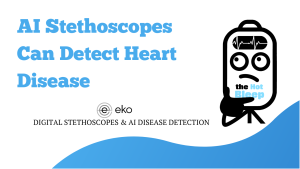Zipline’s Drone-based Medical Delivery System❇

Zipline uses drones to deliver medical supplies to remote areas. To have a thorough understanding of why Zipline exists, please let’s watch this video about Zipline’s role in healthcare logistics.
PROS AND CONS OF ZIPLINE
Pros:
- Can deliver medical supplies quickly and efficiently to remote areas
- Can help to improve access to healthcare for people in underserved areas
- It can be used to deliver emergency medical supplies
Cons:
- Drones can be expensive to operate
- There are regulatory hurdles to overcome in many countries
- Drones can be limited by weather conditions
HOW IT WORKS
First, Healthcare providers request supplies via an app. Next, Zipline dispatches the drone from its distribution centre. These drones are autonomous; meaning that they can operate independently without human control.
After the drones leave the distribution centre, they fly to their designated location, drop off the package they were there to deliver and return to the distribution centre.

WHO IS IT FOR?
- Hospitals: Quick restocking, urgent lab samples, and critical medications.
- Remote Areas: Reaches underserved regions with challenging terrain.
- Emergency Situations: Swift response during disasters or outbreaks.
DISRUPTION AND IMPROVEMENT
Zipline is disrupting the market of healthcare logistics by replacing slow ground transport which in turn is saving lives in emergencies.
Not only that, this disruption is improving access for healthcare professionals, reducing wait times for supplies and optimising supply chains to deliver when needed.

CHALLENGES AND LIMITATIONS
Despite having such a profound impact on the delivery of healthcare supplies, it is important to note that Zipline still faces some challenges and those challenges are:
- Payload Capacity: Drones have limits and as a result, large-scale deliveries remain a challenge.
- Weather Dependency: If for instance, the skies are Stormy, Zipline takes a rain check as it is not equipped to handle the storm.
FUTURE EVOLUTION AND INDUSTRY IMPACT
The future of Zipline is bright and has only just begun. We do foresee a future where Zipline drones will have:
- More enhanced capabilities like braving the storm.
- Expanded reach – more than what it currently has.
- Faster deliveries – imagine a supersonic drone that is safe of course.
As for the long-term impact on the medical industry, we hope that the implementation of Zipline would lead to healthcare access to all globally which would save lives currently lost to the most preventable causes.

What the Experts are Saying
In addition, Dr. Marschall S. Runge, CEO of Michigan Medicine loves Zipline. Here is what he had to say about this technology:
“By deploying Zipline, we save time for patients and medical workers, leading to better outcomes.”









